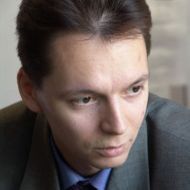How to Film Bruce Willis in His Absence: Deepfake Creation and Application

In recent years, advanced technologies for creating deepfake images have made it almost impossible to distinguish them from real photos and videos. They can help to recreate stars of the past, to insert images of famous people into places they’ve never been, and to convincingly use audio deepfakes instead of real calls. Researchers discussed the future development of deepfakes and how to protect yourself from new types of fraud during the round-table discussion ‘Fake News: An Interdisciplinary Approach’ as part of the XXIII Yasin (April) International Academic Conference on Economic and Social Development.
Deepfake uses synthetic media based on artificial intelligence and the way it works is based on the idea that one artificial intelligence can deceive another, says Alexey Neznanov, Associate Professor at HSE School of Data Analysis and Artificial Intelligence. For example, if you add a sticker or a special filter to a picture of a panda, then a neural network trained for animal recognition won’t see the panda, but might see a gibbon instead.

Alexey Neznanov, Associate Professor at HSE School of Data Analysis and Artificial Intelligence
‘There are Generative Adversarial Network (GAN) services that are learning to reproduce an object more accurately so that the recognizer identifies it more accurately. Anyone can work on developing these, you only need a basic knowledge of mathematics (1st-year undergraduate level) and Internet access.’
The principles of deepfake are based on the technology of object recognition and its replacement. In 2019, the first-generation of relatively convincing deepfakes of politicians and Hollywood stars appeared.
By 2021, deepfakes were being easily produced and commonly used in cinema and advertising. The most famous case in Russia concerned an advertisement for Megafon, when Hollywood actor Bruce Willis literally "traded his face” with his image being inserted into the video, without him ever acting in person in front of the camera, via a neural network.
Now we are on at least the third generation of deepfakes. With each new stage of technological development, the rendering of faces, realism, and functionality improves. Alexey Neznanov believes that the 4th generation of deepfakes is coming soon with will tend towards an omnichannel focus (video, text, smells and other identifying characteristics at the same time).
There are many ways to use deepfakes for good — from advertising to the transformation of museum experiences, says the expert.
There are examples of legally successful deepfake startups. For example, the Russian company Deepcake, in addition to the Megafon ad with Bruce Willis, recreated the face of George Miloslavsky, a character from the movie ‘Ivan Vasilievich: Back to the Future’ as portrayed by Leonid Kuravlev, for a SBER advert. For this project, the training of artificial intelligence lasted 16 days, and the programme processed about 7000 images.
However, it would be strange if this technology of replacing faces in photos and videos was used only legitimately and for good. ‘A sharpened metal blade can be a life-saving scalpel in the hands of a surgeon, or it can be a weapon. The same drug can be both a poison and a medicine. There are hundreds of examples of this kind, and it can also be applied to deepfakes. It’s all about the application of the technology,’ says Dmitry Ogorodov, lawyer, and expert of the Committee on Artificial Intelligence at the Commission of the Russian Federation for UNESCO.
The technology opens up a lot of opportunities for a wide range of nefarious activities.
Dmitry Ogorodov highlighted the main ones:
- audio deepfakes for the purpose of extortion (for example, calls like ‘Mum, I’m in trouble, please send money to this number’, ‘your account is blocked, provide your PIN code’, etc.);
- perjury and falsifying evidence in civil and criminal proceedings (for example, someone creates a video showing a person declaring that they borrowed money and are not going to give it back, however there is a receipt stating that they fully undertake to pay the debt);
- defamation of character (for example, a fake image of a politician visiting a nightclub, where they should not be).
Provision for the responsibility for such violations and falsifications has already been stipulated in the legislation of the Russian Federation. The problem is the capability of existing forensic examination. ‘Many methods used by experts in ordinary cases become ineffective with the development of deepfake technologies,’ notes the researcher. ‘In such cases, forensic experts have to admit they can't determine whether it's true or not,’ he states.
‘All my colleagues state: ‘We are not ready.’ Electronic signatures and watermarks can go some way towards solving the problem, but they are still not widely used, says Alexey Neznanov.
He sees the ‘Detect Fakes’ project as one of the solutions to the problem. On this website, ordinary users help to create a database of deepfakes and real pictures for further fact-checking. This initiative is open to everybody.
More radical measures remain controversial, say the experts. During the round table, the researchers proposed limiting the circulation of photos and videos which neural networks can learn from, or limiting the availability of processors and video cards. There were also ideas about creating an international organization to control the spread of deepfakes, similar to the IAEA. This approach shows that fake videos in the modern era are becoming just as dangerous as weapons-grade plutonium.
Alexey Neznanov
Associate Professor, School of Data Analysis and Artificial Intelligence
See also:
Applications for Participation in XXVI April International Academic Conference Still Open
Applications can be submitted on the conference website until December 16, 2025. The programme has been developed around five research themes: Economics, Human Capital and Society, Instrumental Methods and Models, Foresight Research, and International Research. The heads of these areas have presented, in video format, the priority topics and sections for which they are expecting submissions.
Applications to Participate in April International Academic Conference Now Open
HSE University is now accepting proposals to present academic reports at the XXVI April International Academic Conference named after Evgeny Yasin. Applications can be submitted until December 16, 2025. The conference events will take place mainly on-site in Moscow from April 14 to 17, 2026.
24 Countries Represented at 25th Yasin International Academic Conference Held by HSE University
The Programme Committee of the 25th Yasin (April) International Academic Conference on Economic and Social Development has summed up the initial results. In 2025, 1,384 people from 24 countries and 29 Russian regions participated in the conference, with 335 of them delivering presentations.
Stuck in the Net: How Much Time Children Spend Online
On average, a schoolchild spends 48 hours a week on studies—equivalent to a six-day working week for an adult. This was highlighted by experts at the round table ‘Domains of Children’s Well-Being Evaluation for Human Potential and Evidence-Based Social Policy Development,’ held as part of the 25th Yasin (April) International Academic Conference.
Russian and Chinese Scholars Share Experience of Transformation of Doctoral Education
The Russian and Chinese postgraduate education systems originally borrowed their institutional frameworks from the Soviet Union. However, in the 21st century, they have evolved along different paths. While key performance indicators for postgraduate programmes in Russia are declining, China is seeing a rapid increase in the number of postgraduate students. These contrasting trajectories and the reforms undertaken in each country in recent decades were the focus of a roundtable discussion held as part of the 25th Yasin (April) International Academic Conference.
Nobel Laureate Proposes Solution to Markov Equilibrium Problem
In dynamic games, a Markov equilibrium involves strategies that guide players' behaviour based on the current state of the game, rather than its entire history. This approach is effective when players have access to complete information. But when uncertainty arises in the game—for instance, when players are unsure of who they are dealing with—this approach can become problematic. Eric Maskin, Nobel Laureate in Economics and Professor at Harvard University, addressed this issue in a paper presented at the XXV Yasin (April) International Academic Conference on Economic and Social Development held at HSE University from April 15 to 18, 2025.
‘The World Is Becoming More Complex and Less Predictable’: What Scientists Say about the Future
The future is now more difficult for researchers to forecast, and events that are hard to predict are playing an increasingly significant role. But there is good news too: scientists are confident that humanity will adapt to any changes. This was the focus of discussion at the International Symposium ‘Foresight in a Rapidly Changing World,’ which took place as part of the 25th Yasin (April) International Academic Conference.
Fragmentation and Bloc Formation: How the Global Economy is Changing
Sergey Dubinin, former head of the Bank of Russia and Professor of Finance and Credit at the Faculty of Economics at Moscow State University, has delivered an honorary address at the XXV Yasin (April) International Academic Conference. He spoke about the transformation of the global monetary and financial system, as well as the Russian economy.
More Children, More Happiness: HSE Experts Study Impact of Number of Children on Russians' Assessment of Happiness
Russians with children feel happier than those without children. At the same time, the number of children influences the assessment of happiness: the more children Russians have, the happier they feel. These conclusions were outlined inthe report ‘More Children, More Happiness: The Impact of the Number of Children on Russians’ Assessment of Happiness,’ presented at the XXV Yasin (April) International Academic Conference on Economic and Social Development, held on April 15–18 at HSE University. The study was conducted by Elena Churilova, Senior Research Fellow, and Dmitry Jdanov, Chief Research Fellowat HSE International Laboratory for Population and Health.
HSE Expands Cooperation with Gulf Countries
HSE University and the Centre for International Policy Research (Qatar) have agreed to collaborate in the field of social sciences, with plans for joint research, academic exchanges, and regular expert engagement. The agreement was signed during the roundtable ‘State Capacity and State Resilience in the Global South,’ held as part of the 25th Yasin (April) International Academic Conference at HSE University.


